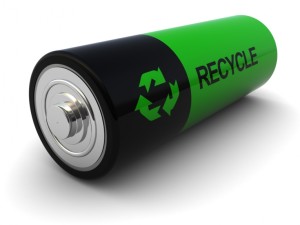A battery is a gadget comprised of one or more electrochemical cells that convert the stored chemical energy into electrical energy. In today’s power savvy world, dry cell is one of many types of electrochemical cells available for consumer use, but it was a great innovation when it was invented. Wet-cell batteries, which came first, were normally delicate glass holders with lead bars swinging from an open top. They required cautious effort to avoid any spillage. This risk level along with many other reasons called for the development of the dry-cell battery.
A dry cell contains a paste of immobilized electrolyte, with just the right amount of dampness in it to permit the current to flow seamlessly. In contrast to batteries containing wet cell, a dry cell can work without spilling, since it does not hold free fluid. This makes dry cell batteries the best for use in almost all portable equipment.

A common dry-cell battery is the zinc-carbon battery, which is an adaptation of a wet cell that is called the Leclanché cell. As you can see from the above illustration, the cell is made up of a zinc compartment acting as the anode. The cathode is a carbon bar, fully surrounded by a paste of carbon, ammonium chloride (NH4Cl) and manganese oxide (MnO2).
Types and Use of Dry Cell Batteries
An AA battery is a dry cell battery that is being utilized in various electronic gadgets. There are many sorts of dry cell batteries available across the globe, using different combination of metals and other chemicals. Some examples are: R6 (carbon-zinc), Lr6 (basic), Kr157/51 (nickel-cadmium), Fr6 (lithium-iron-disulphide) and Hr6 (nickel-metal-hydride).
The Lr6 (antacid), Fr6 (lithium-iron-disulphide) and R6 (carbon-zinc) are the standard non-rechargeable AA batteries.
The Hr6 (nickel-metal-hydride) and Kr157/51 (nickel-cadmium) are rechargeable AA batteries.
The standard working voltage for standard non-rechargeable AA batteries is 1.5 volts and for rechargeable batteries 1.2 volts.
AA batteries are variously utilized. The popular Stompers (toy cars with four-wheel drive) run on single AA battery. Another use is as a part of penlight, which is a small-sized pen flash-light, typically needing two AA batteries or AAA batteries to get operated. The dry batteries are additionally utilized as a part of digital cameras. Since digital cameras consume a lot of energy, users are recommended to use AA rechargeable batteries as the cost of using AA non-rechargeable batteries would be an extra burden on their pocket.
Responsible Handling and Disposal
Batteries regularly hold chemicals that are unsafe if discharged into the earth. Numerous local recycling facilities accept batteries; however

present day alkaline batteries can ordinarily be discarded with daily waste. It is important that buyers likewise think about utilizing rechargeable batteries, since they could be reused and then recycled, thereby not adding to the landfills.
See also:



